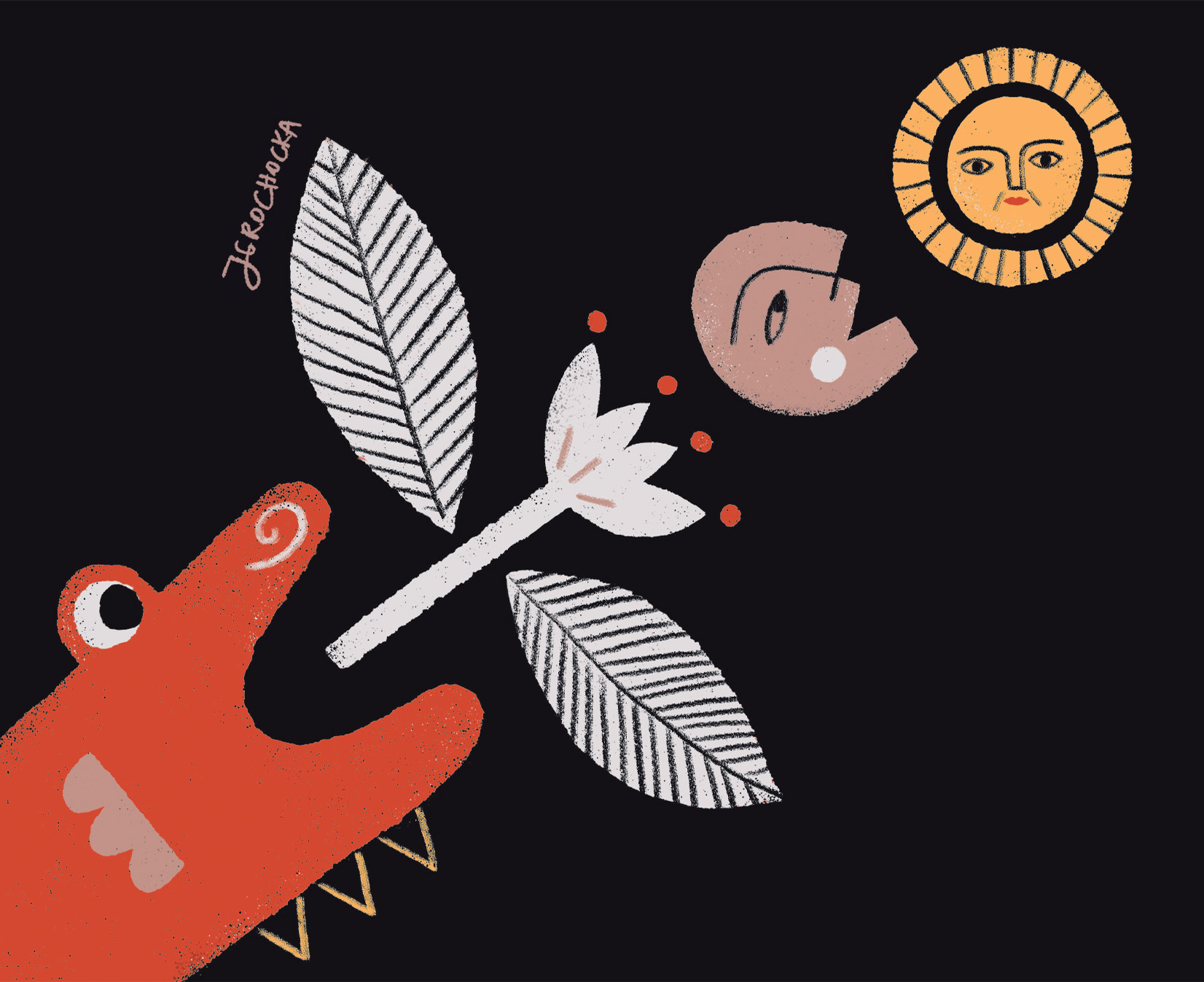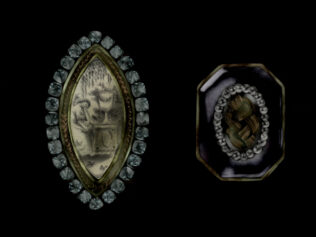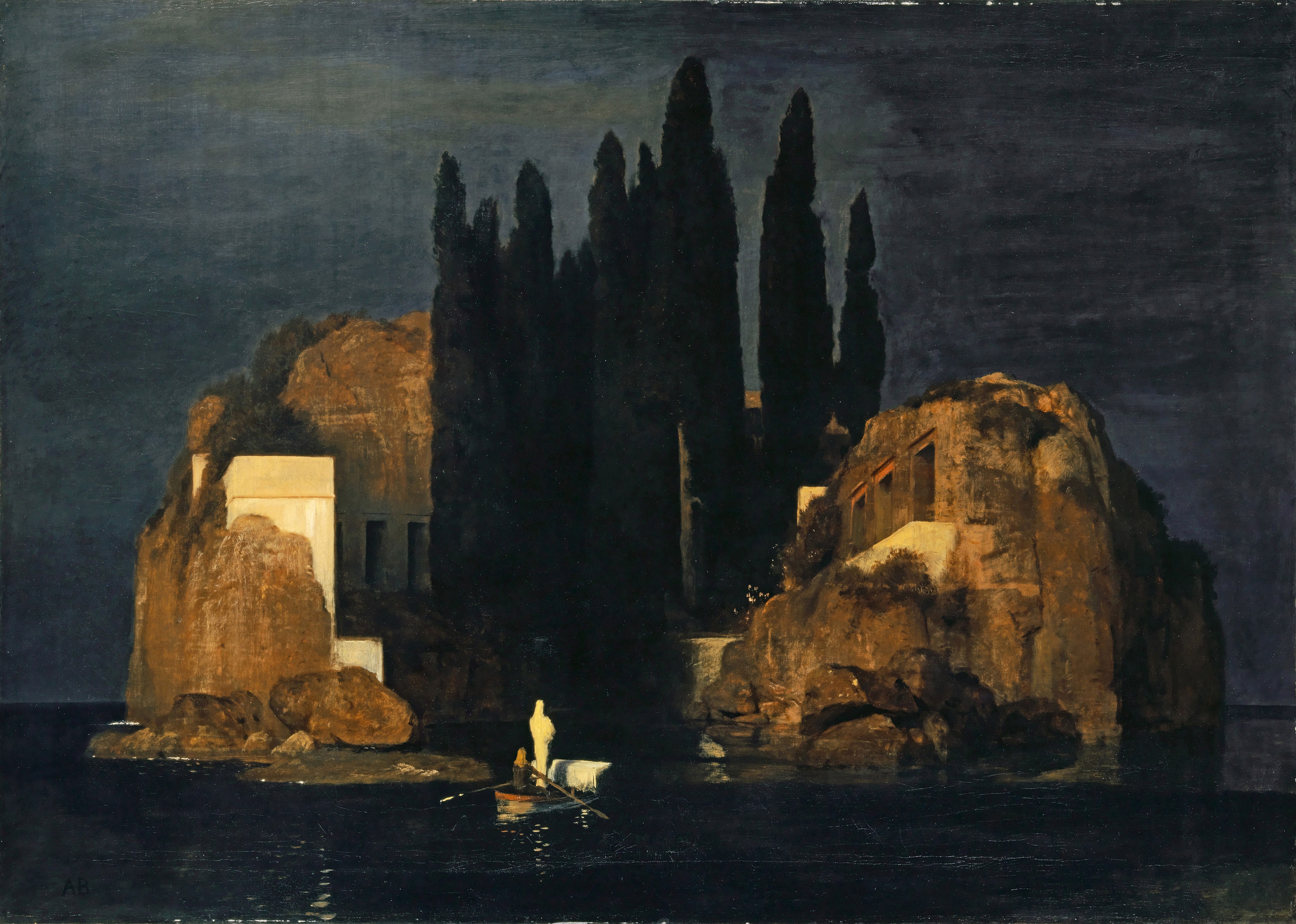
It is possible to prepare for one’s own death, to soothe one’s fear, instead of making the inevitable taboo. Buddhism offers insights on coming to terms with transience and making use of the time we have.
In contemporary culture, death is taboo. We avoid talking about it and are at pains to hide the fear it inspires. Practicing Buddhists, on the other hand, spend a lifetime preparing for this final demise. Despite numerous differences, you can find many similarities between the Eastern and Western approach to death.
We’re all going to die—that much is certain. Despite scientific discoveries and medical advancements, no matter how much we take care of our physical and mental health, regardless of age, appearance, and religious beliefs; no matter where we come from, one thing remains unchanged: memento mori. This phrase, repeated over the centuries, has appeared like a refrain on tombstones, in books, sarcophagi, and chapels—and still, it conveys the same truth today.
Death is something most people fear, that much is obvious. Anxieties can stem from the irrevocable end of one’s existence, or the transition to another mode of being. If the latter is true, then the question becomes what is concealed behind the curtain? While still being mindful of the inevitable, it is possible to alleviate the sense of dread and lead a better life.
At first glance, it would seem religion and philosophy offer divergent answers to these questions. But in taking a closer look, it is clear that the means may be different but the goal is the same.
A Vision of Reincarnation
For many people, reincarnation is the first thing that comes to mind when they hear the word “Buddhism.” The uninitiated are likely to regard this idea as a promise of eternal life. Or, that people do not vanish from the world after death; the soul is not doomed to an eternal sojourn in heaven or hell, preceded, in some circumstances, by a period in purgatory. Instead, and quite simply, souls move on from one life to another. Nothing ends, and we start over each time. Despite these common misconceptions, Buddhist thought is founded on the opposite idea.
What Buddhists are after is not a sequence of incarnations, but a release from the cycle of rebirth. This ring of birth and death is called sansara, or samsara, which, in Sanskrit and Pali, means the wandering of souls, the cycle of reincarnation. Sansara is linked to transience and suffering: it is an eternal pilgrimage, from which we crave release. As a passage from a collection of Buddha’s speeches called the Dhammapada puts it, “this city [body] is built of bones, plastered with flesh and blood; within are decay and death.” Life entails suffering, and birth opens up the prospect of disease, old age, and eventually, death.
Thus, dying does not put an end to our existence and blissful interpretations of reincarnation entertained by people in the West may not align with Buddhist notions of “eternal life.” The longed-for release from the cycle of perpetual incarnations can be granted by nirvana alone. This Sanskrit word for “blown out” or “extinguished,” denotes a state of freedom from suffering. Although, at the moment of release from samsara, people cease to exist as individual beings and become blended with the void, this does not amount to an annihilation of consciousness. According to Marta, a practicing Buddhist, “Void and nothingness are not the same thing. Void is the dynamic potential of everything. Anything can emerge out of it.”
Overcoming Fear
Marta has long been passionate about religions as a cultural and historical phenomenon, but it was the thought of death that first got her interested in Buddhism. When, in 1992, she was about to travel to Asia on a scholarship, she decided reading books in religious studies was no longer sufficient; she needed to act. Yet, a visit to a zen Buddhism center on the outskirts of Warsaw turned out to be disappointing. The breakthrough came on first reading The Tibetan Book of Living and Dying by Sogyal Riponche. Although the celebrated Buddhist teacher would eventually face allegations of emotional, physical, and sexual abuse, his book sold millions of copies and marked the start of new path for many. In 1996, Marta took what is known as the Threefold Refuge (triśarana in Sanskrit): refuge in Buddha, refuge in Dharma (Buddha’s teaching) and refuge in saṅgha (a community of Buddha’s disciples). Thus the Buddhist adherent declared she would attempt to live her life according to its principles: to practice meditation and protect life in every form. She also met her teacher and, several years later, visited his monastery in eastern India.
Today, Marta continues to develop her practice. “What made me follow that path? One reason was that I was constantly suffering from anxiety,” she explains. “Before I became a Buddhist, the anxiety was acute. I still get anxious, but the feeling is no longer the burden it used to be. The other reason is my fear of death. So far, death has not touched me personally: my parents are still with me and I wasn’t there when other loved ones died. Still, I feel I’ve got less and less time. More than half my life has passed, so it’s time to face the facts and begin preparations for death.”
Step by Step
According to Marta, Buddhism offers a step-by-step manual for reality. Every action has an effect, and practice takes one to a higher level, from which we can move to the next one, as long as a certain set of instructions are followed. Simple as that sounds, it is actually very difficult. The Tibetan Book of the Dead, or, transliterated to Bar-do Thosgrol from Tibetan script in Sanskrit, which literally means: “Liberation in the Intermediate State Through Hearing,” is this kind of manual. It is a ritual text attributed to Padmasambhava, Riponche’s guru, a tantric master who lived at the turn of the eighth century. The book describes an individual’s path from death to rebirth. This is the bar-do, or the in-between.
In his commentary on The Tibetan Book of the Dead, psychoanalyst Carl Jung observes that the first step on the path toward dying is crucial: it is at this point that we have the greatest opportunity to broaden our knowledge and attain enlightenment. “By and large, state of mind is at the core of Buddhist approach to death,” confirms Robert Szuksztul, lecturer at Kraków’s Jagiellonian University Center for the Comparative Studies of Civilizations. “The mind is the main generator of actions and their consequences. Our new awareness is the result of our previous one, but the two are not the same. We cannot speak here of the soul, which moves continuously from body to body.”
The Dhammapada conveys a similar message: “Mind precedes all mental states. Mind is their chief; they are all mind-wrought. If with a pure mind a person speaks or acts, happiness follows them like a never-departing shadow.” This is why one’s state of mind at the moment of death is so crucial. Fear, reluctance, or resistance will have implications for the future. People should be accepting of their death and have their loved ones close by, as this will give them peace of mind. Institutions are being established to that very end, including Buddhist hospices, such as The Buddhist Hospice Trust in the UK; in addition, medical staff are becoming increasingly aware of the needs of Buddhists. “The dying individual needs to have the space to reflect,” says Szuksztul. “This can be difficult with the TV switched on in the hospital room. Similarly, your awareness should not be blunted by painkillers, as this disrupts your confrontation with death.”
The 14th Dalai Lama looks into the stage of dying itself in his introduction to Death, Intermediate State and Rebirth in Tibetan Buddhism, by Lati Ribonchay and Jeffrey Hopkins. The spiritual leader stresses it is crucial for both the dying individual and those around them to be prepared. For instance, excerpts from the Bar-do Thos-grol can be read aloud to the dying person. Their peace must not be disturbed by despair or agitation. If they die while harboring negative feelings, they may be reborn as a being of a lower order: an animal, hungry spirit, or an entity from hell. The dying individual, too, should avoid longing of any kind—particularly desire, hatred, and ignorance. Even a seemingly mundane element like the temperature can influence where a person will end up at the next stage of their journey. According to the Dalai Lama, the need to be warm may take one to a hot hell, and if one wishes to be somewhere cool, they may arrive at a cold one instead.
These examples are a good example of the fact that dying takes preparation and a great deal of care. Dr. Szukszul agrees: “It is possible to come to terms with death long before it actually happens. The practice of mental discipline serves this very purpose: one such form is meditating on the deceased and the stages of the body’s decomposition after death. This peculiar memento mori is meant to be an incentive for further practice, and to bring it home to us we must not waste time. The fate that befell the deceased will also befall us…”
After death, the individual enters the intermediate state of bar-do. This is the time when one sees spirits, gods, demigods, people, and beasts both peaceful and angry. According to Jung, these deities are simply the emanation of one’s soul. If, for seven days, the soul does not find a suitable place in which to be reborn, it goes through a small death, after which it continues to look for another chance to be reborn for another seven days. This cycle can be repeated seven times. In other words, a person can spend up to forty-nine days in this intermediate state.
In a broader sense, bar-do is more than just the space between death and rebirth, the term denotes every moment of human existence. Even in being alive, people are, in fact, between birth and death.
However, not all branches of Buddhism recognize the existence of the intermediate state. For example, Pure Land Buddhism, originating from China, rejects the idea of bar-do, suggesting another solution instead.. Translated by Dr. Szuksztul to “Pure Bliss,” Sukhāvatī is a stop on the path to enlightenment, also known as Western Paradise or Pure Land, established by Amitabha. This was where the aforementioned buddha vowed to save all those willing to be reborn there and give themselves over to his care. All it takes to make it to Pure Land is the willingness to get there, as well as nenbutsu, the practice of reciting Amida’s name.
“Sukhāvatī is a sliver of the nirvana attained by Buddha,” observes Dr. Szuksztul “A realm of perfect existence, which provides a favorable environment for practicing, and the practice itself seems short and easy. Attaining nirvana remains an individual’s supreme goal, but through the intermediate rebirth in Sukhāvatī, that goal is easier to meet. We could say that, in the Pure Land, one enjoys a corporeal existence in the state of nirvana. It is an image of infinite, blissful existence.” In other words, Pure Land is the last stage on the path to nirvana, but it is just as possible to head in the opposite direction to bodhisattvas (beings seeking enlightenment). Those who wish to help others, can be reborn in samsara after a time in Sukhāvatī.
The incarnation cycle is governed by karma. A by now commonly understood concept, karma is the principle of cause and effect. Every action will, sooner or later, have a result, along with just consequences. By nourishing compassion within, and seeking knowledge and enlightenment, each subsequent incarnation will bring one closer to nirvana. If not, one risks being reborn as a being of a lower order.
Although humans are imperfect, they have instruments enabling them to work for the benefit of others, and thus for their own benefit and that of their future incarnations. Unlike Christianity, Buddhism does not view the body as dubious. “The body is simply the result of one’s former life; in itself, it is neutral,” Dr. Szuksztul explains. “On the one hand, we wish to break free from the body; on the other, it is the body that gives us the intellectual opportunity to seek enlightenment. This sets us apart from animals who have no such opportunity.”
Four Plus Eight
On the surface, “cause and effect” sounds simple, but in reality it turns out to be more complicated. “Each action has its consequences but those consequences won’t necessarily become immediately apparent,” says Marta. “If you put your hand into the fire, you’ll get burned. The result is immediate. But there are actions you take at age seven, for which you won’t see their results until you are sixty. In other words, the implications of your actions are stretched over time to the extent that, when it comes to cause and effect, it’s difficult to put two and two together. And then there is the question of intention: do you do something because you want to feel good, or do you do it to look after yourself and become a better person, parent or partner.”
The road to release from suffering consists in the basic rules taught by Buddha: the Four Noble Truths, which enable us to grasp the doctrine, and the Eightfold Path, which refers primarily to good practice.
The Four Noble Truths:
All existence is suffering.
The suffering has its cause.
Suffering can cease.
There is a path that leads to the end of suffering.
The Eightfold Path
1. Right Understanding (Pali: Sammā-ditthi)—primarily involves knowing the Four Noble Truths, understanding the law of cause and effect, the concept of impermanence, and the wish to make every being free from suffering.
2. Right Resolve (Pali: Sammā-san·kappa)—its crucial components are being resolved on renunciation of worldly life, freedom from ill will, and harmlessness.
3. Right Speech (Pali: Sammā-vācā)—refraining from false speech, slanderous speech, coarse speech, and thoughtless prattle.
4. Right Action (Pali: Sammā-kammanta)—refraining from deplorable deeds done to the body. This includes taking a life, taking what has not been given, or inappropriate sexual conduct.
5. Right Livelihood (Pali: Sammā-ājīva)—ensuring we earn our living in a fair and legitimate way.
6. Right Effort (Pali: Sammā-vāyāma)—preventing unhealthy states (of mind) which have not yet manifested, bringing about healthy states which have not yet manifested, and maintaining and perfecting healthy states which already exist.
7. Right Mindfulness (Pali: Sammā-sati)—contemplation of body, contemplation of feeling, contemplation of state of mind, contemplation of phenomena.
8. Right Meditation (Pali: Sammā-samādhi)—developing concentration and wisdom.
All strands of Buddhism have a common foundation: daily mindfulness practice. It remains closest to Buddha’s original teaching, and is the characteristic feature of the Theravada school, currently most widely spread in South Asia (Sri Lanka, Myanmar, Laos, Thailand). The other foundation is the metta practice of compassion, or loving kindness.
“Maintaining discipline is the hardest part,” admits Marta. “It’s the same story with anything you practice: learning a language, physical or mental exercise. If you don’t do it every day, you regress. During meditation, you get into a certain state of mind, and the aim is to carry that over into everyday life; and to transform your mind, so that it is attentive and full of empathy at all times. In my experience as a being who will, most likely, have no memory of her past life, all that exists is the here and now. Only advanced practitioners are able to remember what had happened to them before, because mental distraction prevents us from remembering our previous incarnations.” Jung makes a similar observation where, according to the philosopher, being focused on enlightenment enables us to sidestep the pitfalls awaiting us as we make our way through the bar-do.
East versus West
Concepts surrounding the afterlife and death developed by people in the East are not so markedly different from Western thought. Both cultures’ views on death have a lot in common, certainly more than sets them apart. The greatest difference between Eastern and Western modes of thinking is how both traditions perceive time.
Time in the West is linear. People are born, live, and die. In Judaeo-Christian culture, the afterlife consists of two options: eternal salvation or eternal damnation. In Christianity and Buddhism alike, the aim is to be free from suffering. In Buddhism, this happens through the liberation from being an individual entity. Christian thinkers argue that while the human soul preserves its individuality, its aim is to blend with God. St. Paul mentions this in the Second Letter to the Corinthians: “But we all, with unveiled face, beholding as in a mirror the glory of the Lord, are being transformed into the same image from glory to glory, just as by the Spirit of the Lord” (2 Cor 3,18).
As Jung observed in his commentary on The Tibetan Book of the Dead, the goal of the process which begins at the moment of death is to restore to a soul the divinity it lost at birth. Similar ideas can be found in Christian thought. “The likeness has been lost through sin,” says theologian and religious scholar Piotr Popiołek. “But as the Logos is incarnated into a material body, and then rises from the dead, matter becomes deified. In Christ, humans experience the perfect communion with God. They take part in his power and glory, while preserving their individuality. However, rather than attain this through their own effort, they are being granted it through grace.” While it is true that Christian thought mentions the resurrection of the body as well as the mind, the resurrected body is no longer governed by the same laws as its mortal equivalent, and it is made of a different matter.
What is more, the “eternal rest” mentioned in the Christian prayer for the dead, is not unlike Buddhist nirvana. It could be a similar state to that of the Buddhist melting in the void. If it is rest that follows, people would no longer suffer, they’d no longer be exposed to misfortune, disease, and old age, all of which were grappled with as mortal beings. Souls are not stuck in purgatory in the bar-do, or waiting for yet another chance to get closer to God. Eternal rest is a state of ultimate harmony.
The fundamental differences between Christianity and Buddhism are the absence of a personified God and a fixed self. “It was doing away with God that made Buddha’s experience so revolutionary,” explains Marta. “This thought strikes a chord with me. What does it matter whether there is a God or not, if I suffer anyway? Suffering does not ennoble you. Sometimes, it can even strip you of dignity. In these circumstances, whether or not God exists is irrelevant. Believing that there is a higher being may be a source of support—but it doesn’t have to be. It didn’t work for me.” Marta adds that the absence of an institution which would take at least some of the burden off a believer’s shoulders is a challenge. If that is the case, an individual needs to take full responsibility for themselves.
In 1955, Geoffrey Gorer published his essay “The Pornography of Death,” where he argued that in Western culture, death replaced sex as taboo. According to the English anthropologist, death was part of daily life as late as in the 19th century. It lurked at every step. Medicine was helpless in the face of many diseases and the living conditions for society’s poorest increased the risk of an early demise. Cemeteries were usually located at the heart of the village, funerals were major events, and executions were held in public to warn people of the consequences of breaking the law. Dead bodies were no taboo either: a three-day vigil often being held by the corpse.
Today, the reverse is true. For the average person in the so-called West and Europe, death is held at a distance. Confined to hospitals and funeral homes, The subject is hardly being discussed on a day-to-day basis. “In the past, people prepared their dead for burial themselves,” Szuksztul explains. “Now we are separated from the realm of death: when someone dies, professionals take over immediately. We have no contact with the deceased.”
Yet, we do remember that we will die someday. “This is a gap that neither Western philosophy nor Catholicism fills. It does little to encourage believers to move on from the childlike phase of awe at the ritual; of exploration. It does not encourage people to seek things out themselves,” says Marta. “But, at a higher level, there is really very little difference between Buddhism and Christianity. I myself am an example of the fact that Buddhism filled a lack, which could just as well have been filled by Christian thought. The point is neither to indulge in magical thinking nor to approach it too analytically, separating mind from body, as we do in Europe. The point is to demonstrate the universality of human experience. Nobody wants to suffer, everyone wants to be happy. Everything else is just commentary and cultural conditioning.”
Translated from the Polish by Joanna Błachnio
This translation was re-edited for context and accuracy on May 19, 2022









